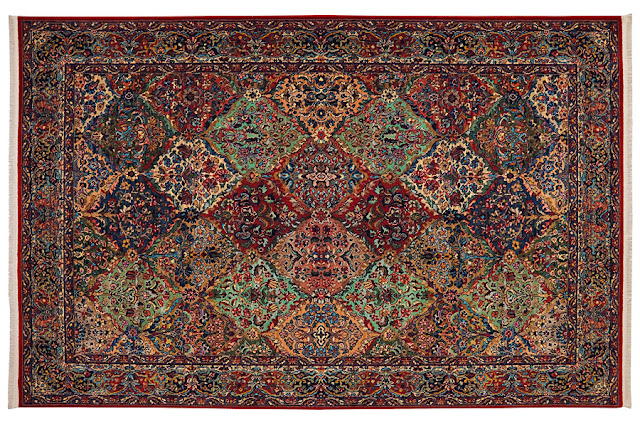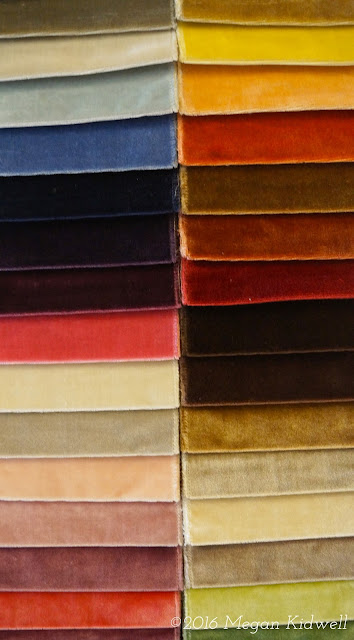 | ||
|
Well, almost.
Layout
First, you need to decide what furnishings you want for your room(s) and what they can hold.
Grab some graph paper, measure your room(s), and draw their outlines on the graph paper (I recommend quadrille paper, aka 4’-0” in real life equals 1 inch on the page). Make sure you measure window and door locations, along with outlets and heat or air conditioning grille locations, too, as those can all affect the room’s layout.
Then decide what pieces you want for your room(s)? In the living room, do you want a sofa and two chairs, or a sofa and a loveseat? Or, heck, go crazy and plan for two sofas! How will they be arranged in the space? Find pieces similar to what you want, either online or in-store, and measure them. Will the size you’ve found fit into your room the way you’d like? Or will you need to add three extra feet to the living room to fit your design scheme?
A few general rules of thumb, to help in planning:
* Where’s the center of the room? Or, do you want to center your furniture layout on an
architectural feature, like a fireplace or window?
* How do you usually move through the room? Will your desired layout interfere with traffic? If
so, you might need a different option.
* Do you want the furniture to float in the center of the room, or have some pieces – sofas and
chairs, generally - against a wall? If you plan to float your furniture, make sure you have a
walkway about 36” wide between the walls and the furniture to allow for ease of movement.
Though others may disagree, I’ve found that 24” (or even 18”) between pieces within the
group is fine for moving to a piece of furniture, and you don’t have to get out of your seat to
put your drink down on the cocktail table.
* Every seat should ideally have a flat surface on which to set a drink (and have enough coasters
so they can!). Don't just think tables, either: garden stools and ottomans with trays are
perfectly serviceable drinks tables.
* If you’re laying out your dining room, try to ensure that each seat at your table will have 36”
to the wall or other pieces, like a buffet, so there’s plenty of room to get up and walk around, if
necessary.
* Buy furniture that can handle the scale of your rooms: an enormous overstuffed sofa might not
work well in a cottage living space, and conversely, a tiny settee will probably be swamped in
a family room with 20’ ceilings.
The Forbidden Conversation Topic, a.k.a. Money
 |
| Via Wikimedia Commons |
But you also have to decide how that budget is going to be apportioned.
Look at the rooms you love: you didn’t toss all those design images, did you? Which of the rooms’ elements really jump out at you? Or, which of the elements do you want to jump out. What’s the focal piece going to be? A large artwork? A French deux-corps? A pair of Art Deco armchairs?
Once you’ve settled on what you want to be the standout star of your room, you need to decide how much you’re willing to spend on that item, versus the rest of the furnishings you want. You have to be patient and understand that The Knockout might not be the first thing you buy. It might be the LAST thing you buy, but you need to be patient.
If you’ve been buying “stand-in” furniture until you can afford The Knockout – an IKEA credenza, or a loveseat from Target instead of that mohair upholstered baby you really want – STOP. Don’t spend your money on things you intend to toss in the future, or items that will wear out in 5 years and require re-purchasing.
Whatever you do, don’t buy anything you don’t love, or that won’t fulfill a function in your home. If you can’t decide whether you love that area rug, don’t buy it, even if it is 50% off. Once you’ve lived with it for a year, you might loathe it, and then out it goes! And a portion of your design budget is wasted. Remember William Morris’s maxim:
“Have nothing in your house that you do not know to be useful, or
believe to be beautiful.”
Instead, save that money you were going to spend, and deal with the fact that your grandmother’s porcelain dinner service is going to live in cardboard boxes a little while longer; you can always unpack them if called upon to host Thanksgiving or Christmas dinner, and repack them when everyone’s gone. After you wash them, of course.
The money you save should be set aside so you won’t spend it on other things. If that means opening an online savings account to help, then do it! When you get those Christmas checks from Aunt Rita and year-end bonuses from your boss, deposit them in your savings account!
Why? Because you might not find The Knockout immediately, but when you do find it, you want to be ready to seal the deal. Whether you decide you’re willing to spend $3,000 or $15,000 on a credenza, you can’t buy it if you don’t have the money for it. Did you spend $1,000 of your Knockout money on a half-price mink vest? Too bad: The Knockout isn’t going home with you, and you’ll have to deal with the fact that someone might buy it before you scrape together the cash to purchase it at a later date.
Unless there is an emergency (your roof blows off, or your house floods), don’t dip into your Design Fund.
Meanwhile, remember that it’s okay for a room to be “unfinished” for a while, where “a while” means “several years”. (Just tell everyone you're trying out Minimalist Interior Design for a while.) Rooms take time to mature and show their personality – and to reflect your personality – and you don’t want them to be decorated haphazardly.
You didn’t spring from the womb fully formed and with predetermined character traits, and your style won’t either. Over time it will take shape into a style and layout that is comfortable for you and your loved ones, be they spouses, children, parents, or pets. If your living room looks like a skating rink for a while due to the expanse of bare hardwood floors, then so be it.
 |
| Jose Goncalves via Wikimedia Commons |
















